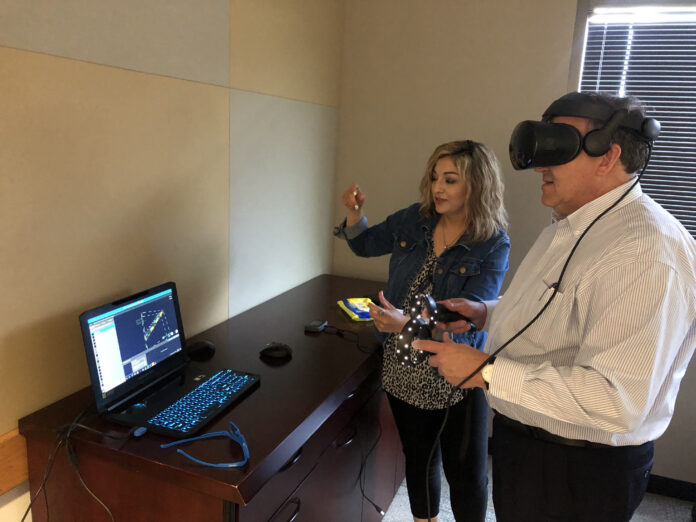
Ector County ISD’s Chief Innovation Officer Jason Osborne and some staff members recently returned from the University of North Texas Health Science Center in Fort Worth where they struck up a “pretty incredible partnership.”
Osborne said UNT Health Science Center is bringing virtual reality software into their facility.
“And we’ll be sharing out data with our kids this fall in multiple areas of research. So that was extremely exciting because now students will see that pathway, as well, into the UNT system,” Osborne said.
He said ECISD drove this opportunity into UNT health sciences.
“So now they’re super excited and they’re learning from us. It’s possible that several researchers will change the way they do data analysis, so not only are our kids learning but they have an opportunity to drive these scientific questions …,” Osborne said.
George H.W. Bush New Tech Odessa teacher Bernadette Barragan went on the trip to Fort Worth and said it was an eye-opening experience.
“I didn’t know about many of the different programs that are offered. Each department was excited to hear about the work we did this year with the neuroscience course. It was also exciting to brainstorm with each team about future possibilities for our students here in ECISD. It was also fun to learn that our students were using virtual reality technology (syGlass) in a way they had not experienced yet,” Barragan said in a text message.
“We were able to show them firsthand how our students collaborated with other scientists on their data sets using the VR tools. It’s exciting to know that our students are contributing to real science research,” she said.
Osborne said NTO students also helped drive potential changes to the software.
“Students have a lot of input in that process. Not only can students help drive science, they can also drive industry. Meanwhile they’re learning what they need to learn in the classroom,” Osborne said.
One experiment students did involved working with a researcher and looking at brain data to analyze and measure it. The only way to do that is with virtual reality, Osborne said.
“… So students, after they are trained, they are looking at actively growing neurons and brain tissue. These are neurons that are in the process of growing and trying to find another neuron to connect with; another cell to connect with, or create a synaptic connection. It’s a very novel area in research …,” Osborne said.
“… We’re trying to design opportunities for students to be on the cutting edge of technology and research, so as research and technology evolves they have access to that.
“This gives students post-doc like experiences in high school,” he added.
He said the best way to look at the brain data is in 3-D.
“You have to be in an environment where you can kind of drive through. A lot of data is taken off of images, or lots of images or image stacks, and it’s hard to tell a lot of times what the tissue or the data looks like in depth. So what virtual reality gives you is the chance to drive through the depth of the data. …,” he said.
Osborne said the brain tissue is recorded in 3-D video form so that data set is then uploaded into a software solution called syGlass.
“That’s where the kids can go and actually see it and measure it and take notes on the data as it moves,” Osborne said.
He added that the students took to it quickly.
“… They gravitate to it, so they really don’t want to get out of that experience. They get consumed with it. It’s fun to them. They love sharing their findings. They constantly are asking questions,” Osborne said.
One or two students going into post-secondary education and plan to major in neuroscience, which will be life-changing for these youngsters, he noted.



